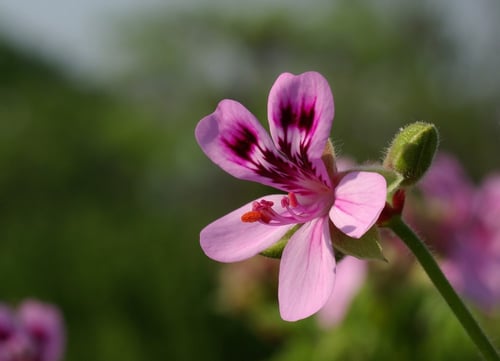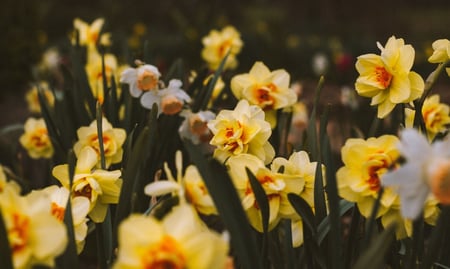
While seasonal plantings are a lovely way to spruce up our urban spaces, as well as offer food and habitat to pollinator friends, we need to take a more sustainable route.
As stewards of our urban spaces, it’s up to us to ensure we take the most responsible approach to landscaping of all kinds.
Unfortunately, that’s not a duty we take very seriously when it comes to seasonal color. Our addiction to bright pansies in spring, impatiens in summer or marigolds in fall has major environmental and health costs, but the landscaping juggernaut has most people overlooking them.
Time to change that. We need a better understanding of the dangers this habit poses, just as we need better tools for creating sustainable seasonal plantings. Luckily, they do exist.
The Perishable Planting Problem
 The biggest problem with sustainable seasonal plantings is that they’re not heavily prioritized. Instead, we have an industry based on churning out massive amounts of annual color and display. This poses a huge host of problems, including:
The biggest problem with sustainable seasonal plantings is that they’re not heavily prioritized. Instead, we have an industry based on churning out massive amounts of annual color and display. This poses a huge host of problems, including:
- A plastic epidemic of massive proportion, made worse by the landslide of plastic pots we use for sustainable plantings
- The expense of new plants every single season, which weighs heavily on city budgets and prevents that money from going to better causes
- Public health risks that come from new plants every season, most of them loaded with fungicides, herbicides and pesticides
- A residual buildup of chemicals such as glyphosate in our systems, especially those of workers
- Destruction of insect and animal species that are sensitive to these chemicals
- The use on nonrenewable resources such as peat to grow and nourish the merry-go-round of plants
It’s true that blooming plants are an excellent way to help the birds and the bees – as well as our other pollinator friends. For that reason, we’re fully in support of flowering plants each season. But do these plants need to be such destructive one-hit wonders?
We say no; there’s a better way.
A Better Approach to Seasonal Color
 Admittedly, sustainable seasonal plantings are a tough problem. Millions of people in the United States – and countless more across the world – expect to walk into home improvement stores in April and May and find that seasonal color they’re looking for, and all before Memorial Day.
Admittedly, sustainable seasonal plantings are a tough problem. Millions of people in the United States – and countless more across the world – expect to walk into home improvement stores in April and May and find that seasonal color they’re looking for, and all before Memorial Day.
That’s big money, and big money doesn’t like to adapt. Trying to change an industry that’s been around for hundreds of years is like trying to steer an ocean liner with an oar.
That doesn’t mean we can’t do anything, however. As with organic food, consumers will need to ask for change – and that means voting with your dollar.
Here at Ecogardens, we’re combatting the problem by seeking out growers who:
- Use biodegradable containers (though hopefully not peat)
- Grow organically, with a bare minimum of herbicides, fungicides and pesticides (even the all-natural kind)
- Promote vibrant perennials, plants that offer seasonal color without dying and needing replanting each year
It’s not a problem that will change overnight, but we can get there by foregoing a little bit of that exotic color in favor of rugged plants that do their jobs reliably year after year, as well as supporting sustainably minded companies working to tread a little less lightly on Planet Earth.
Want to talk about sustainable seasonal plantings more? We’d love you to get in touch with us today, so don’t wait.

